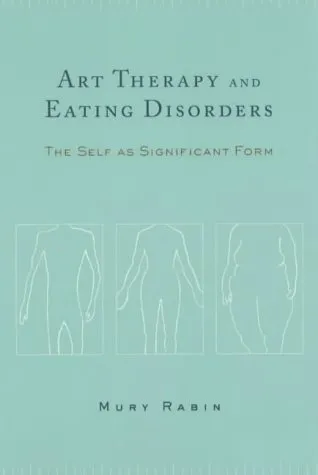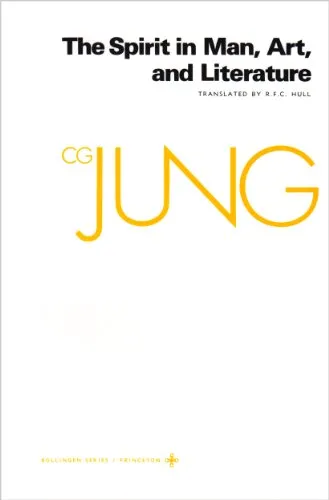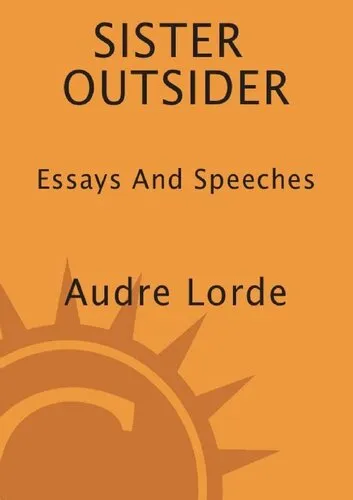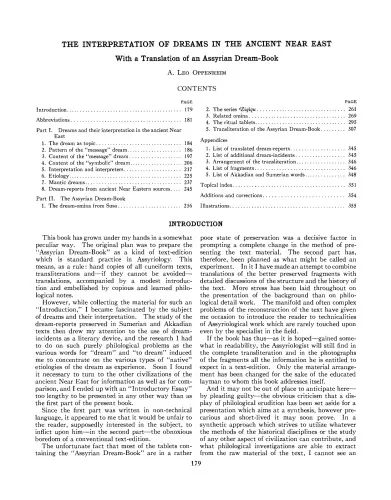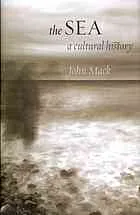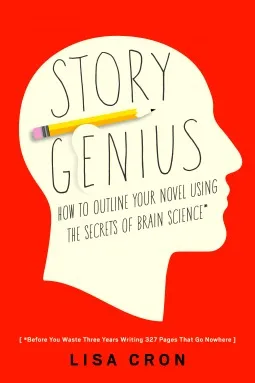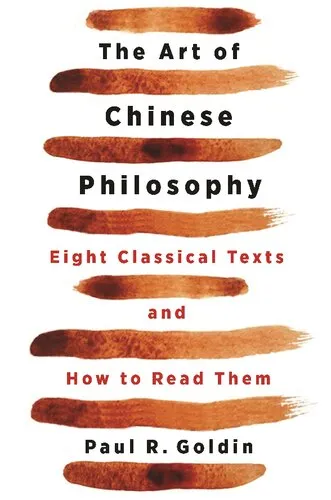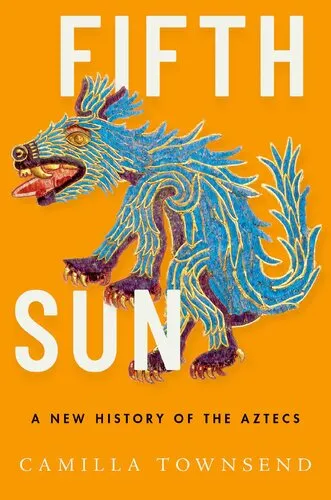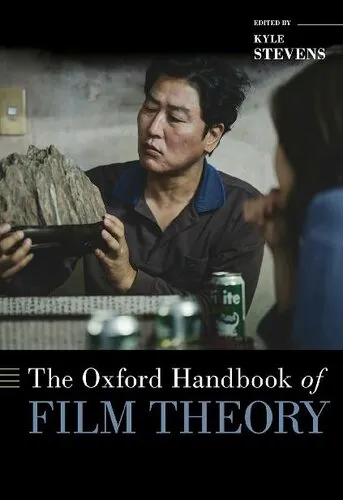Art therapy and eating disorders: the self as significant form
4.4
بر اساس نظر کاربران

شما میتونید سوالاتتون در باره کتاب رو از هوش مصنوعیش بعد از ورود بپرسید
هر دانلود یا پرسش از هوش مصنوعی 2 امتیاز لازم دارد، برای بدست آوردن امتیاز رایگان، به صفحه ی راهنمای امتیازات سر بزنید و یک سری کار ارزشمند انجام بدینکتاب های مرتبط:
خلاصه تحلیلی کتاب
کتاب Art therapy and eating disorders: the self as significant form اثری تخصصی است که به بررسی پیوند میان فرآیند هنر درمانی و تجربههای فردی و جمعی افراد مبتلا به اختلالات خوردن میپردازد. نویسنده با تکیه بر سالها تجربه بالینی و پژوهش، چارچوبی تحلیلی ارائه میکند که نشان میدهد چگونه خلق اثر هنری میتواند به بازسازی «خود» کمک کرده و فرآیند درمان را تقویت کند.
در این اثر، مفهوم «The self as significant form» بهعنوان کلید فهم رابطه میان شکل هنری و هویت فرد در کانون توجه قرار دارد. مطالعه موردیهای دقیق، تحلیلهای نظری جامع و توجه به ابعاد بینفردی ارتباطات درمانی، این کتاب را به منبعی ارزشمند برای محققان و درمانگران بدل کرده است.
اطلاعات مربوط به سال انتشار و جوایز کتاب در منابع معتبر در دسترس نیست، بنابراین در این معرفی به آن پرداخته نشده است. جایگاه این کتاب در میان آثار حوزه هنر درمانی، با تاکید بر جامعه هدف پژوهشگران، درمانگران و دانشجویان رشتههای روانشناسی و هنر درمانی، کاملاً شاخص است.
نکات کلیدی و کاربردی
یکی از نقاط برجسته کتاب، ارائه راهکارهای عملی برای ادغام هنر درمانی با پروتکلهای موجود درمان اختلالات خوردن است. نویسنده تاکید میکند که شکل هنری در این روند، صرفاً ابزار بیان نیست، بلکه میتواند ساختار روانی و هویتی بیمار را بازآفرینی نماید.
کتاب برای پژوهشگران این حوزه، گنجینهای از دستهبندیهای نظری و رویکردهای عملی فراهم میکند؛ از جمله چگونگی استفاده از اصول Gestalt در هنر درمانی، ترکیب رویکردهای روانپویشی با Observational methods، و بهرهگیری از تعاملات گروهی برای تقویت حس تعلق و خودپذیری بیماران.
بهطور طبیعی، هنر درمانی در برخورد با اختلالات خوردن نیازمند درک عمیق از خاستگاههای روانشناختی و اجتماعی این اختلالات است. نویسنده با بهرهگیری از مثالهای مستند، نشان میدهد که این تکنیک، چگونه میتواند با زبان غیرکلامی ارتباط میان درمانگر و بیمار را تسهیل کند.
نقلقولهای ماندگار
کتاب حاوی جملاتی است که عمق تجربه هنر درمانی را در پیوند با درمان اختلالات خوردن به نمایش میگذارد. این گفتهها، ارزش تأمل دارند زیرا نه تنها بخشی از محتوای علمی اثر را میسازند، بلکه الهامبخش خوانندگان حرفهای نیز هستند.
«هنر، زبان بیواسطه جان است؛ جایی که شکل، معنا و هویت یکدیگر را بازتاب میدهند.» نامشخص
«وقتی دست بیمار قلممو را لمس میکند، نه تنها روی بوم، بلکه بر ذهن خود نیز نقشی تازه میزند.» نامشخص
چرا این کتاب اهمیت دارد
اهمیت این کتاب در ایجاد یک پل مؤثر میان نظریه و عمل نهفته است. بسیاری از منابع هنر درمانی با رویکرد کلینگر نوشته شدهاند، اما Art therapy and eating disorders: the self as significant form تمرکز ویژهای بر مخاطبان درگیر با اختلالات خوردن دارد. این تمرکز باعث شده که کتاب، از حالت عمومی خارج شده و ابزاری اختصاصی برای این حوزه خاص باشد.
این اثر، زبان مشترکی میان درمانگران، هنرمندان و بیماران ایجاد میکند؛ زبانی که ریشه در فرم، معنا و تجربه زیسته دارد. پژوهشگران میتوانند از ساختار ارائهشده در کتاب برای الگوبرداری در طراحی پژوهشهای خود استفاده کنند، در حالی که درمانگران با تکیه بر مثالهای بالینی میتوانند رویکرد خود را تقویت کنند.
در جهانی که اختلالات خوردن بیش از پیش به مسئلهای اجتماعی و فرهنگی بدل شدهاند، ارزش چنین کتابی دوچندان است. توجه به «self as significant form» به عنوان مفهومی کلیدی، افقهای تازهای در درک و درمان این اختلالات میگشاید.
Analytical Summary
Art therapy and eating disorders: the self as significant form is an in-depth exploration of the transformative role that artistic processes play in the treatment and understanding of eating disorders. Written for academics, clinicians, and thoughtful readers, the text engages with the complex interplay between psychological patterns, self-representation, and the healing potential of creative modalities.
This book situates art therapy within contemporary clinical practice, offering a nuanced examination of how visual expression can bridge verbal gaps in psychotherapy. It recognizes that eating disorders often involve struggles with identity, embodiment, and self-worth, and contends that art-making provides a window into the underlying narratives that shape these experiences.
Through detailed case studies and theoretical discussion, the work explores how symbolic forms and imagery reveal dimensions of the self that verbal exchange may fail to capture. Information about the precise publication year is unavailable due to no reliable public source, but its content remains timeless in its relevance to therapeutic contexts.
Key Takeaways
Readers will gain a comprehensive understanding of how art therapy can be applied to support recovery from eating disorders and how the concept of the “self as significant form” enriches conventional treatment paradigms.
First, the book elucidates how creative expression can externalize internal conflicts, making them tangible and malleable in therapeutic space. Second, it outlines the theoretical foundations that support integrating art therapy alongside other psychotherapeutic methods. Third, it underscores the importance of the therapist’s role in interpreting and responding to visual narratives. Fourth, it provides rich visual and textual analyses that illustrate the process of identity reconstruction. Lastly, it encourages further academic discourse around interdisciplinary approaches to mental health care.
Memorable Quotes
"Art allows the unspeakable to find form, and in that form, the self can be seen anew." Unknown
"Recovery is as much about reclaiming your image of yourself as it is about changing behaviors." Unknown
"The canvas becomes a mirror, reflecting what is often invisible in spoken conversation." Unknown
Why This Book Matters
This book holds significance for scholars, therapists, and anyone interested in the intersection of creativity and mental health because it bridges the experiential with the analytical.
Art therapy and eating disorders: the self as significant form advances the discourse on non-verbal therapeutic interventions, emphasizing how art can serve both diagnostic and restorative purposes. For professionals in psychology and psychiatry, it provides an additional lens through which patient narratives can be understood. For art therapists, it offers validation and depth, affirming the value of their work in a clinical setting. The concepts here invite dialogue and collaboration across disciplines.
Inspiring Conclusion
Art therapy and eating disorders: the self as significant form challenges readers to reimagine recovery and therapeutic engagement as deeply creative acts.
By presenting the self as “significant form,” the book reframes personal identity not as a static concept, but as an evolving visual and emotional narrative shaped through art. Whether you are a clinician seeking new methods, a student of psychology, or an individual on a healing journey, these pages offer tools and insights to enrich understanding and practice.
Now is the time to explore this approach: read it, share its ideas with colleagues, and discuss how art therapy can transform lives affected by eating disorders. In doing so, you become part of a growing movement advocating for the integration of creativity into mental health care.
دانلود رایگان مستقیم
شما میتونید سوالاتتون در باره کتاب رو از هوش مصنوعیش بعد از ورود بپرسید
دسترسی به کتابها از طریق پلتفرمهای قانونی و کتابخانههای عمومی نه تنها از حقوق نویسندگان و ناشران حمایت میکند، بلکه به پایداری فرهنگ کتابخوانی نیز کمک میرساند. پیش از دانلود، لحظهای به بررسی این گزینهها فکر کنید.
این کتاب رو در پلتفرم های دیگه ببینید
WorldCat به شما کمک میکنه تا کتاب ها رو در کتابخانه های سراسر دنیا پیدا کنید
امتیازها، نظرات تخصصی و صحبت ها درباره کتاب را در Goodreads ببینید
کتابهای کمیاب یا دست دوم را در AbeBooks پیدا کنید و بخرید
1286
بازدید4.4
امتیاز0
نظر98%
رضایتنظرات:
4.4
بر اساس 0 نظر کاربران
Questions & Answers
Ask questions about this book or help others by answering
No questions yet. Be the first to ask!
